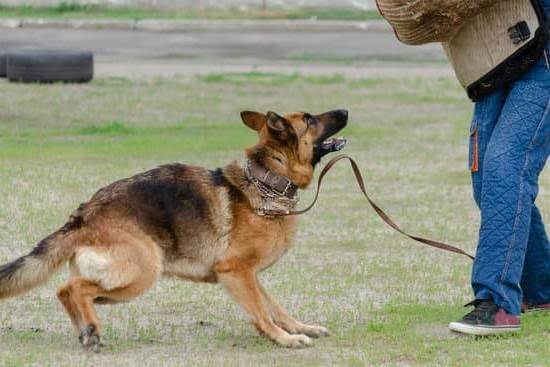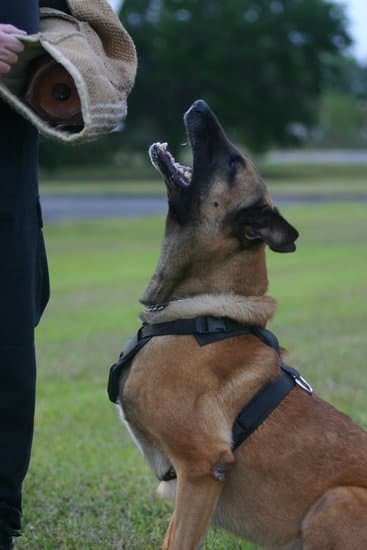Have you ever wondered how are dogs trained to detect cancer? It is truly remarkable how these four-legged friends have been able to contribute to the field of medical science.
From their superior sense of smell to the specific training methods used, dogs have been making a significant impact in the early detection and diagnosis of cancer. In this article, we will delve into the fascinating world of cancer detection dogs, exploring their abilities, training processes, real-world applications, and ethical considerations.
Dogs have long been known for their incredible sense of smell and their ability to sniff out various scents. But what sets them apart in the realm of cancer detection? Through a brief overview of the history of using dogs for cancer detection, we can gain a greater understanding of how their unique abilities have been harnessed for medical purposes over the years.
Delving deeper into the subject, we’ll explore the science behind canine olfaction and how it plays a crucial role in enabling dogs to detect cancer. From the anatomy of a dog’s nose to the specific scent associated with cancer cells or compounds, we’ll unravel the fascinating world of a dog’s sense of smell and its application in detecting this deadly disease.
Canine Olfaction
Dogs have long been known for their exceptional sense of smell, but the science behind canine olfaction is truly remarkable. The anatomy of a dog’s nose allows for their superior sense of smell, making them invaluable in various fields, including cancer detection. The olfactory system of dogs is incredibly intricate, with hundreds of millions more scent receptors than humans. This allows them to pick up on scents at minuscule concentrations that would go undetected by human noses.
The incredible sense of smell in dogs can be attributed to the structure and function of their nasal cavity. Their nostrils capture scent molecules, which are then processed by a sophisticated olfactory system in their nasal passages.
Specialized structures inside the nasal cavity, such as turbinates and a large surface area covered in olfactory receptor cells, enhance a dog’s ability to detect and discriminate between different odors. Additionally, dogs have a specialized organ called the vomeronasal organ, which plays a role in detecting pheromones and other chemical signals.
In the context of cancer detection, dogs have shown an astonishing ability to detect the unique odor associated with cancerous cells or compounds. Research has revealed that certain types of cancer produce volatile organic compounds that are released through breath, urine, or skin secretions. These compounds create distinct odors that trained dogs can recognize and alert their handlers to. As a result, dogs have been successfully trained to sniff out various types of cancer with impressive accuracy.
Training Process
The training process for cancer detection dogs is an intricate and specialized endeavor that requires a combination of scientific knowledge, behavioral training techniques, and a deep understanding of canine olfaction. Dogs are trained to detect cancer through a process known as scent imprinting, where they learn to recognize the unique odors produced by cancer cells or compounds. This training typically starts at a young age, as puppies are more receptive to learning and can develop their olfactory skills early on.
One common method used in training cancer detection dogs is through operant conditioning, where dogs are taught to associate the scent of cancer with a positive reinforcement such as food or play. This approach capitalizes on the dog’s natural desire to seek out rewards while teaching them to recognize and alert their handlers to the presence of cancerous odors.
Additionally, some trainers utilize clicker training to mark desirable behaviors during the detection process, which further reinforces the dog’s ability to identify specific scents linked to cancer.
It is important to note that not all dogs possess the innate ability or temperament required for cancer detection work. Specific breeds such as German Shepherds, Labrador Retrievers, and Belgian Malinois are often favored for this type of training due to their strong work ethic, intelligence, and heightened sense of smell.
However, individual temperament and drive also play a crucial role in determining whether a dog is suitable for cancer detection training. The success of these specially trained dogs in identifying various types of cancers has paved the way for their integration into real-world medical applications and research studies.
| Training Method | Dog Breed |
|---|---|
| Operant Conditioning | German Shepherd |
| Clicker Training | Labrador Retriever |
| Scent Imprinting | Belgian Malinois |
The Role of Positive Reinforcement in Training
The training process for cancer detection dogs involves the utilization of positive reinforcement techniques to teach these animals to recognize cancer cells or compounds. Positive reinforcement is a training method that involves rewarding desired behaviors to increase the likelihood of those behaviors being repeated in the future. In the context of training cancer detection dogs, positive reinforcement typically takes the form of treats, praise, or play as a reward for successfully identifying a specific scent associated with cancer.
One key aspect of positive reinforcement in training cancer detection dogs is the establishment of a strong association between the target scent and a positive outcome such as receiving a treat or verbal praise. Through consistent repetition and reward, dogs learn to associate the unique odor associated with cancer with a positive experience, which reinforces their ability to detect it accurately.
This method has been found to be highly effective in teaching cancer detection dogs to alert their handlers when they detect cancer-related scents.
In addition to treats and praise, another form of positive reinforcement used in training cancer detection dogs is play. Many organizations that train these specialized canines incorporate playtime as a reward for successful detections. By allowing the dogs to engage in their favorite games after correctly identifying cancer-related scents, trainers are able to reinforce this behavior and maintain the dog’s motivation and enthusiasm for the task at hand.
| Positive Reinforcement Techniques | Examples |
|---|---|
| Treats | Small food rewards such as kibble or special treats given immediately after successful scent identification. |
| Praise | Verbal affirmations or petting from handlers used to acknowledge and encourage correct responses during training sessions. |
| Play | Allowing dogs to engage in playtime activities as a reward for detecting cancer-related scents effectively. |
Types of Cancer Dogs Can Detect
Various Types of Cancer
Cancer detection dogs have been trained to detect a wide range of cancer types, including but not limited to breast cancer, lung cancer, ovarian cancer, prostate cancer, colorectal cancer, and melanoma. These specially trained dogs have demonstrated the ability to identify the unique odors associated with different types of cancers, leading to early detection and potential life-saving interventions.
The sensitivity and accuracy of a dog’s sense of smell make them valuable assets in the medical field for detecting various forms of cancer.
Specific Examples and Case Studies
There have been numerous documented cases where cancer detection dogs have successfully identified the presence of cancer in individuals. For instance, in a study conducted by researchers at Medical Mutts, Inc. it was reported that dogs were able to detect prostate cancer-specific volatile organic compounds in urine samples with an impressive 98% accuracy rate.
Additionally, there have been instances where dogs have detected skin cancers through their heightened sense of smell, prompting individuals to seek medical attention and receive timely treatment.
Furthermore, there are ongoing research efforts aimed at expanding the capabilities of cancer detection dogs to identify other types of cancers such as pancreatic and bladder cancer. With each successful case and research advancement, the potential for utilizing canine olfaction in early cancer diagnosis continues to grow.
Impact on Early Diagnosis
The ability of dogs to detect certain types of cancer at an early stage can significantly impact patient outcomes by allowing for prompt medical intervention. Early diagnosis is often linked to more effective treatment options and improved survival rates for individuals facing a cancer diagnosis. The utilization of cancer detection dogs has the potential to revolutionize the traditional methods of cancer screening and contribute towards enhancing public health initiatives related to early diagnosis and prevention strategies.
Accuracy and Reliability of Cancer Detection Dogs
The accuracy and reliability of cancer detection dogs have been the subject of numerous studies and trials, consistently showcasing their remarkable abilities. The success rates of these specialized canines in identifying various types of cancer have surpassed those of traditional diagnostic methods in some cases. Here are some key points to consider when evaluating the accuracy and reliability of cancer detection dogs:
- Scientific Studies and Trials: Multiple scientific studies have demonstrated the high accuracy and reliability of cancer detection dogs. These studies involve training dogs to detect specific cancer odors or compounds through controlled experiments and real-world scenarios. The results consistently show that trained dogs can identify cancer with a high degree of accuracy, often exceeding 90% in certain types of cancers.
- Potential Limitations: While the success rates of cancer detection dogs are impressive, it’s important to acknowledge the potential limitations and challenges associated with their use. Factors such as environmental conditions, distractions, and variations in individual dog performance can impact the overall reliability in certain situations.
- Future Opportunities: Despite any limitations, the field of canine cancer detection continues to evolve with ongoing research and advancements. As technology progresses, there may be opportunities to enhance the accuracy and reliability of cancer detection dogs through innovative training techniques, standardized protocols, and collaboration with medical professionals.
Overall, the accuracy and reliability of cancer detection dogs offer a promising avenue for advancing early diagnosis and treatment of cancer. Their exceptional olfactory capabilities combined with rigorous training protocols position them as valuable assets in the fight against this widespread disease. As research continues to unfold, we may witness even greater achievements in harnessing the potential of these remarkable animals for improving healthcare outcomes related to cancer diagnosis.
Real-World Applications and Success Stories
Cancer detection dogs have been making significant impacts in medical settings, showcasing their incredible ability to detect cancer in real-world scenarios. These specially trained dogs have been employed in various healthcare facilities to assist in the early detection of cancer, leading to improved patient outcomes and potentially life-saving interventions.
Healthcare Facilities
In recent years, cancer detection dogs have been utilized in healthcare facilities such as hospitals and clinics to aid in the diagnosis of cancers. These dogs are often deployed in specialized screening programs where they can assist medical professionals in identifying patients who may require further examinations or testing for potential cancerous conditions. By utilizing the keen sense of smell of these dogs, healthcare providers can benefit from an additional tool for early cancer detection.
Success Stories
There have been numerous success stories related to the use of cancer detection dogs in real-world applications. For example, a hospital in Germany implemented a program using canine olfaction to assist with the identification of lung cancer in patients.
As a result, the program reported a staggering 71% success rate in detecting lung cancer through breath samples with the help of specially trained sniffer dogs. This demonstrates the remarkable potential of utilizing canines for cancer detection and emphasizes their valuable role in medical settings.
Impact on Patients
The impact of cancer detection dogs on patients’ lives cannot be understated. Through their ability to detect cancer at early stages, these dogs have contributed to improved treatment outcomes, reduced mortality rates, and overall enhanced quality of life for individuals affected by cancer. Moreover, the emotional support provided by these furry assistants has also been noted as a positive factor for patients undergoing medical evaluations and treatments for cancer.
Ethical Considerations and Future Research
As remarkable as the abilities of cancer detection dogs are, there are ethical considerations that must be addressed when utilizing them in the medical field. One of the primary concerns is ensuring the well-being and proper treatment of the dogs involved in cancer detection training and operations.
It is crucial for organizations and researchers to prioritize the health, comfort, and overall welfare of these highly skilled animals. Additionally, there is a need to establish clear guidelines and standards for the ethical use of cancer detection dogs in clinical settings to ensure their fair treatment and prevent exploitation.
Looking ahead, future research in the field of canine cancer detection training holds great promise for advancing early diagnosis and treatment of cancer. Ongoing studies are focused on expanding the range of cancers that dogs can detect, improving training methods for even greater accuracy, and exploring ways to integrate canine olfaction technology into medical practice.
With further investment in scientific research and technological advancements, there is potential for cancer detection dogs to play an even larger role in transforming how we approach cancer diagnosis and improve patient outcomes.
Conclusion
In conclusion, the training process for cancer detection dogs is a fascinating and promising area of research and application. Through understanding the science behind canine olfaction and employing positive reinforcement techniques, these remarkable animals are able to detect various types of cancer with impressive accuracy and reliability. Their real-world applications have already made a significant impact in medical settings, providing hope for early diagnosis and improved treatment outcomes for individuals facing cancer.
As highlighted throughout this article, the potential of cancer detection dogs to revolutionize early diagnosis and treatment of cancer cannot be overlooked. Their ability to detect unique odors associated with cancer cells or compounds has been proven through numerous successful case studies and scientific trials.
The ethical considerations surrounding the use of dogs for cancer detection must continue to be carefully evaluated, but the undeniable potential for saving lives and improving patient outcomes is a powerful driving force for ongoing research and advancements in this field.
Overall, the incredible ability of dogs to detect cancer showcases the uniquely powerful bond between humans and animals. By continuing to explore and harness this extraordinary skill, we can hope for a future where early diagnosis becomes more accessible, treatment options become more effective, and ultimately, more lives are saved. The contributions of cancer detection dogs serve as a reminder of the invaluable role that animals can play in the advancement of medical science and healthcare.
Frequently Asked Questions
How Do Dogs Detect if You Have Cancer?
Dogs can detect cancer by using their powerful sense of smell. They are able to detect the odor of certain compounds produced by cancer cells, even in the early stages of the disease.
Studies have shown that dogs can be trained to detect these specific odors, and some have been successful in sniffing out cancer in humans, leading to early diagnosis and treatment.
How Do Vets Detect Cancer in Dogs?
Vets can detect cancer in dogs through a variety of methods including physical examination, blood tests, imaging (such as x-rays or ultrasounds), and biopsies. Depending on the type and location of the cancer, vets may also utilize other diagnostic tools like endoscopy or MRI scans. Early detection is crucial for the successful treatment of cancer in dogs.
What Dog Breed Can Detect Cancer?
Certain dog breeds, such as German Shepherds, Labrador Retrievers, and Golden Retrievers, are known for their ability to detect cancer due to their strong sense of smell and high intelligence. These breeds are often trained for scent detection work and have been successful in identifying various types of cancer in humans and even other animals.
Their keen sense of smell makes them valuable allies in cancer research and early detection efforts.

Welcome to the blog! I am a professional dog trainer and have been working with dogs for many years. In this blog, I will be discussing various topics related to dog training, including tips, tricks, and advice. I hope you find this information helpful and informative. Thanks for reading!





